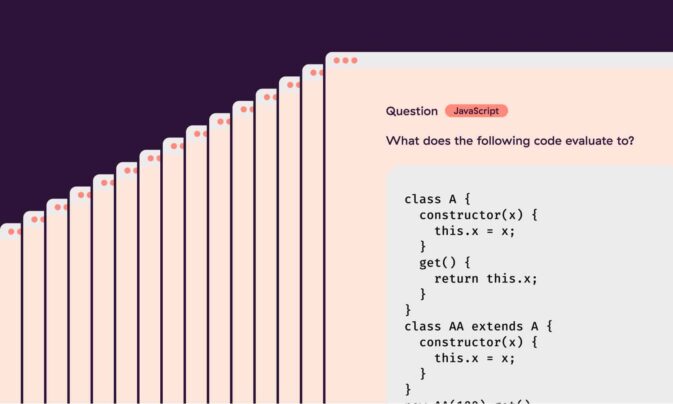Have you heard of something called a purple squirrel? In HR, this is how hiring managers describe ideal candidates — those who tick all the boxes. And much like purple squirrels, ideal candidates don’t actually exist, do they?
They might, if you know where (and how) to look for them. To ‘catch’ ’em, though, you’ll need to know what you’re looking for, and that’s why you want to build an ideal candidate profile. Here’s why that profile matters and how to create one yourself without breaking a sweat.
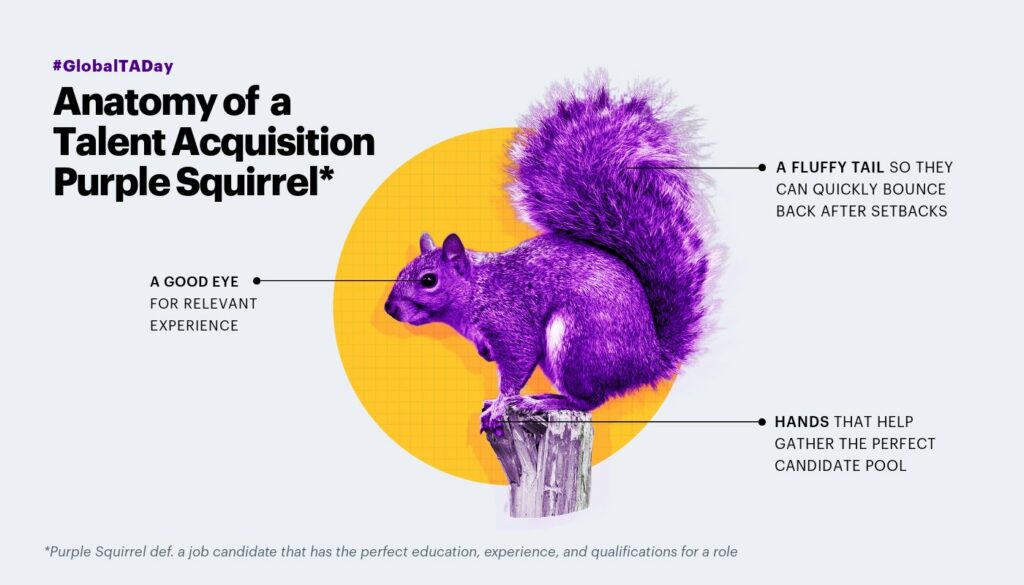
TL;DR — Key Takeaways
- An ideal candidate profile is a hiring tool that helps HR teams make better hiring decisions. It should include a list of all the ideal skills and traits a candidate needs to have to succeed in their role.
- The ideal candidate profile is a detailed internal document that covers education and experience, hard and soft skills, cultural fit, ethical behavior, and compatibility with the rest of your team.
- It differs from a job description, which is used externally for attracting candidates and is also a legally binding document.
- In fact, hiring managers use ICPs to create better job descriptions and improve their sourcing strategies and, ultimately, the quality of hire.
- Additional benefits of creating an ideal candidate profile include savings in time and money, better cultural fit and retention, a better talent pipeline, and improved employer branding.
- Think you’ve found your ideal candidate? Put their skills to the test with Toggl Hire, and tap into our extensive library of ready-made skills assessments — or create your own!

What is an ideal candidate profile?
An ideal candidate profile is a recruitment tool that helps hiring teams make better hiring decisions. It includes all the ideal skills, qualifications, and personal attributes that a candidate should have in order to succeed in their role and fit into your team.
Just like how marketers create buyer personas to market their products or services more effectively, HR professionals use ideal candidate profiles to find the right hires more efficiently.
There are some general characteristics of an ideal candidate profile for each industry and role. However, every company will have its own wish list according to its specific needs.
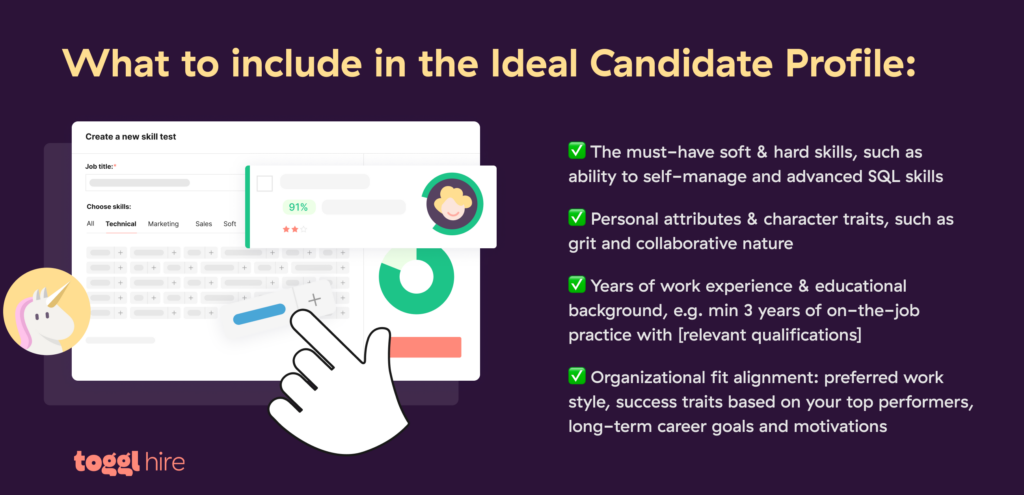
Key elements typically found in ideal candidate profiles
Your ideal candidate profiles will be unique to your business and the role you’re hiring for. However, there are some common elements you should try to include.
1. Education and experience
To be successful in their role, the candidate will likely need to have a certain type of educational background, as well as years of experience.
Think of the type of degree that’s relevant, as well as any necessary licenses, certifications, or other qualifications they’ll need to perform well in their role.
2. Job-specific skills
Each open role will have a list of required job-specific skills, known as hard skills. For example, knowledge of certain applications, processes, problem-solving abilities, and technical know-how.
Make a list of all the hard skills the new hire needs to have, then review the list and divide into must-haves and nice-to-haves. Most of the time, you’ll find you can do without some nice-to-haves if the right candidate comes along.
3. Cultural fit
Company culture can play an important role in how well someone fits into your team and can impact some of your leading KPIs, including attrition and turnover.
And while it’s not an easy thing to measure, you can understand your company’s culture by assessing employee’s work and communication styles, common personality traits, and how they align with the company’s mission and vision.
Answer this question: What are the cultural elements that someone should have to fit into the team and company?
4. Soft skills
These are the non-technical skills that each employee needs to be able to communicate, collaborate, and lead effectively. These include time management, empathy, critical thinking, being proactive, being self-aware, and others.
You don’t need all of them in your ICP (Ideal Candidate Profile). Include those that matter the most for the role and your business.
5. Motivation and initiative
The best candidates are proactive and motivated internally. They are willing to get the work done and don’t have to be told what to do to succeed or wait around for others to solve problems they’re capable of solving.
They solve problems on their own and they are hungry for knowledge and new skills that help them become even better at their jobs. However, different people have different motivations, from social responsibility to remuneration, motivation comes in many shapes and sizes.
Consider what type of motivation underpins great performance in the role? For example, a salesperson will have different motivations than an NGO project lead.
6. Ethical behavior
Your ideal candidate should be guided by a set of moral and ethical principles and show integrity through their work. In other words, they should be honest, confidential, trustworthy, and reliable, and you should be able to trust them not just with your money or your business but also with sensitive customer information.
How important is ethical behavior to the role? For example, ethics will be an important quality for the top candidate of a security company, doctor, or legal professional.
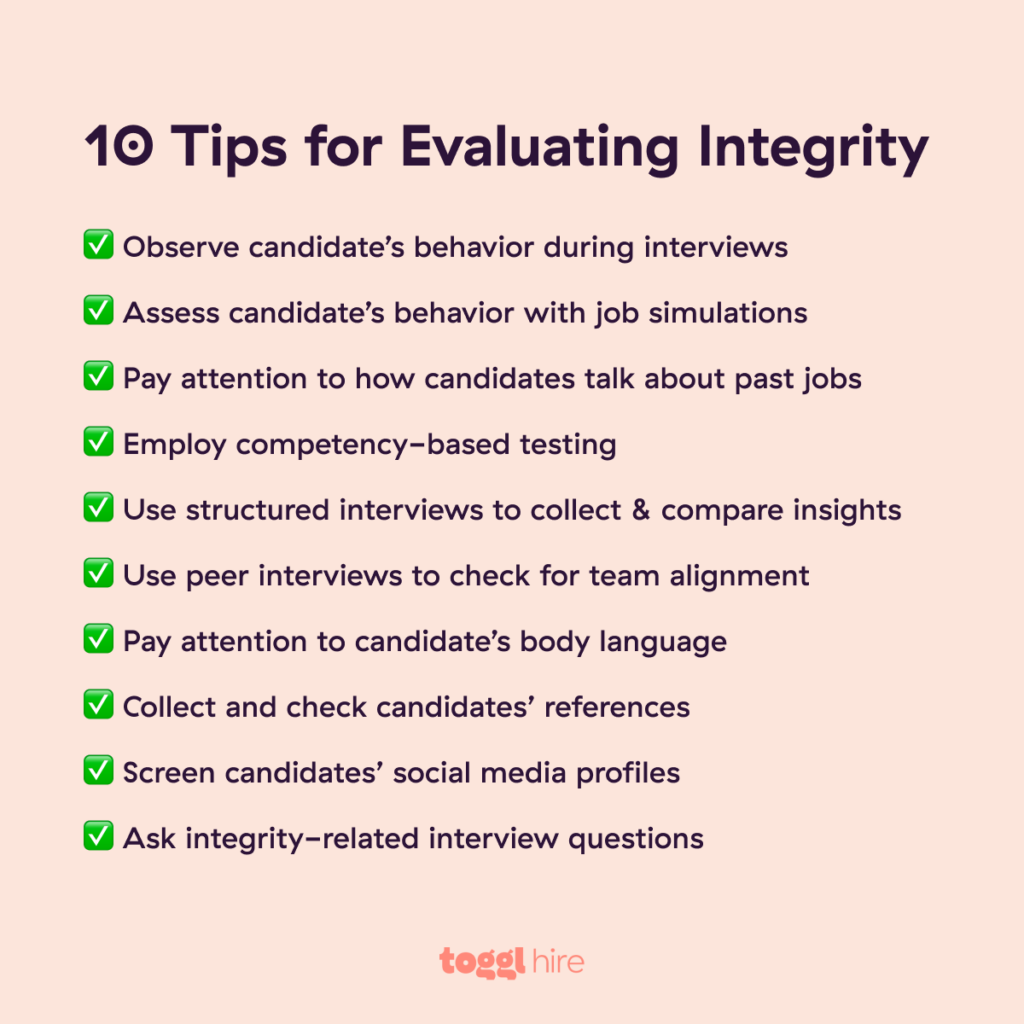
7. Compatibility with the team
Each company and team has its own dynamics and naturally, you want someone who will blend right in. Most companies seek candidates who collaborate well with others, have great interpersonal skills and empathy, and can resolve conflicts in a peaceful manner.
This is naturally more important for some roles than others. Think of a data analyst versus a customer service representative or manager.
Team compatibility will naturally be more important for roles requiring teamwork versus individual contributions. This will be less important if you’re hiring an independent remote worker to handle one-off tasks than if hiring for an in-office manager, for example.
8. Learning agility
According to the World Economic Forum’s Future of Jobs Report, 50% of all employees will need reskilling by 2025 to keep up with the adoption of new technologies. Across many industries, employees are increasingly required to go beyond what they already know and learn new things on the job.
To understand the degree of learning agility your ideal candidates should have, consider the role of change and uncertainty for the position you want to fill.
Summing up, the ideal candidate profile depends on a lot of factors, including the industry, the role, and specific requirements you may have. To attract the right talent, prioritize the aspects that matter the most to your business and the specific needs of the open position.
What’s the difference between an ideal candidate profile and a job description?
An ideal candidate profile and a job description are two different hiring tools. One of the key differences between them is their audience. Although both provide information about the role and the kind of candidate you want to hire, one is used for internal purposes only, while the other is created for candidates.
A job description outlines the responsibilities and requirements for a job, while a candidate profile is a list of desired traits someone needs to have to be considered the ideal person for the job.
Here are some more key differences:
| Ideal Candidate Profile | Job Description | |
|---|---|---|
| Purpose | Outlines the skills and traits that the ideal person for the job should possess | Outlines the main responsibilities, key requirements, as well as the hard and soft skills necessary for the job |
| Content | Focuses on the ideal traits that a successful candidate should have | Details the job, title, duties, technical and soft skills needed |
| Audience | Internal HR team members | Candidates |
| Legality | Not legally binding | Legally binding |
| Use | Internal | Internal and external |
The purpose
A job description outlines the responsibilities a new hire has on the job, as well as the requirements you may have from them as a company.
An ICP describes the technical and soft skills a candidate should have, and the qualifications and traits you desire for someone to have to work in a specific role.
The content
A job description includes the job title, the specific duties, the qualifications, and the hard and soft skills successful employees are required to have.
An ideal candidate profile lists all the desired traits a candidate should have but isn’t expected to tick every box. For example, technical skills, communication skills, cultural fit, moral values, intrinsic motivation, and more.
Audience
A job description is meant to be read by candidates who are looking to apply for a job. The goal is to help them understand what is necessary to perform well in the role and to motivate them to apply.
An ideal candidate profile is meant to be read by the hiring manager and other members of your hiring team. Using it as a reference to screen and evaluate candidates during the interview process.
Legality
A job description is a legally binding document. You use it to outline the requirements of the candidate, and by using it, you comply with your government’s labor laws.
A candidate profile is never legally binding and is subject to continuous change. As your hiring needs shift and adapt, so does your ideal candidate profile.
Internal vs. external use
Job descriptions are used internally as a guide for your HR team to help them source, screen, and hire the best candidates. They’re also used externally as candidates can view them as they apply.
Candidate profiles are most commonly used internally.
How does an ideal candidate profile help your hiring team with recruitment?
Your hiring team and your entire business can benefit from a well-thought-out ideal candidate profile. For example…
It helps you craft a compelling job description
An ICP is the starting point for writing an amazing job description, as it provides input on everything you need from a new hire. You don’t have to copy a bland job description from another website or come up with one that has nothing to do with the actual job.
It improves and refines your sourcing strategy
You’ll have an easier time sourcing great-fit candidates as you’ll know exactly where to look for the kind of candidates you need and how to recognize them during your recruitment process.
You’ll have a better quality of hire
With an ICP at hand, you’ll make better hiring decisions as you won’t settle for less than what you really want to get. According to research, 88% of businesses believe this will be the most important metric in the recruitment process in the upcoming years.
The value of a candidate profile: 6 reasons to create your own
To convince you that a candidate profile is not just something that is nice to have but actually a helpful addition to your HR toolset, let’s deep dive into 6 reasons to consider creating one.
#1. A better hiring process
Once you have defined what you want in a candidate, you can run a smoother and more efficient hiring process. Your sourcing, screening, interviews, and everything else will be more efficient since you’ll know exactly what you’re looking for rather than guessing or waiting for the right person to come by.
💡 Example: Hiring a software engineer
Without having a candidate profile, recruiting an engineer could take much longer and result in a candidate who does not tick all the boxes. With a candidate profile at hand, you’ll know which questions to ask to assess if they’re the right fit, going beyond the technical skills required in a software engineer.

#2. Time and cost efficiency
The average time to hire is around 36 days, but it gets longer for senior roles and more competitive industries. With an ideal candidate profile, you’ll have a better idea of who to target, on which platforms, and in which ways. As a result, this saves you both time and money over the entire recruitment process.
💡 Example: Hiring a designer
Your ideal candidate profile shows that your new designer should have an agency background. Instead of spending time and money on generic job boards, you post your vacancy ad in agency-related communities on Reddit and Facebook, finding your ideal candidate in less time compared to running job ads on LinkedIn.
#3. Improved quality of hire
Refine your hiring process with an ICP to get better hires. Since you have a better understanding of what you expect from the new employee, you’ll also assess the right skills during the recruitment process and have a better quality of hire as a result.
💡 Example: Hiring a customer support representative
With the help of an ICP, you know you need to look for someone with a background in SaaS who has worked with B2B audiences and is confident when talking to executive-level decision-makers. Defining your ideal candidate profile shortens your time to hire by helping you spot the right person much faster and get to a higher-quality shortlist of candidates.
#4. Cultural fit and retention
Creating a candidate profile forces you to think about and define your company culture. By analyzing the workforce you have, you’ll have a better idea of what kind of employees you want to join your business in the future. What’s even better is that you’ll have a standard for company culture to screen against for all future hires.
💡 Example: Hiring a product manager
You’re looking for a product manager for a new tech start-up, and thanks to your ICP, you know that in order to be successful, motivated, and satisfied with the role, the best candidate will have an unorthodox background and prefer working in the office versus remotely.
#5. Better talent pipeline and succession planning
Savvy recruiters understand that the recruitment process is an opportunity to build a database of excellent job candidates to refer to in the future. Having passed your screening stages, this group has the technical skills and backgrounds that you’re looking for and might be open to another role in the future.
💡 Example: Hiring a sales team lead
You’ve had an opening for a sales team lead for a few weeks and you have quite a few candidates matching your ICP. You end up hiring just one but add the others to your talent pipeline database for future consideration. Alternatively, an ICP can be used to spot internal talent ready to step up.
#6. Improved employer branding
You’ll become known as the company that knows exactly what they want. With each job posting describing exactly what kind of candidate you need, job seekers will know that if you reach out for an interview, they’re just the right fit.
💡 Example: Hiring a marketing manager
Marketing managers know all the tricks, and will be able to clearly distinguish good employer brands from the bad. By using an ICP to fill your open positions, prospective candidates and especially marketing professionals, will be attracted to your reputation and what they can achieve in your organization.
Checklist: 5 steps to create an ideal candidate profile
By now, you should be very convinced of the benefits and reasons why you need to create an ICP, like, yesterday. But where do you start in creating your own? Ensure you’ve got the basics taken care of (you’ll see a quick recap below), and then follow these five steps.
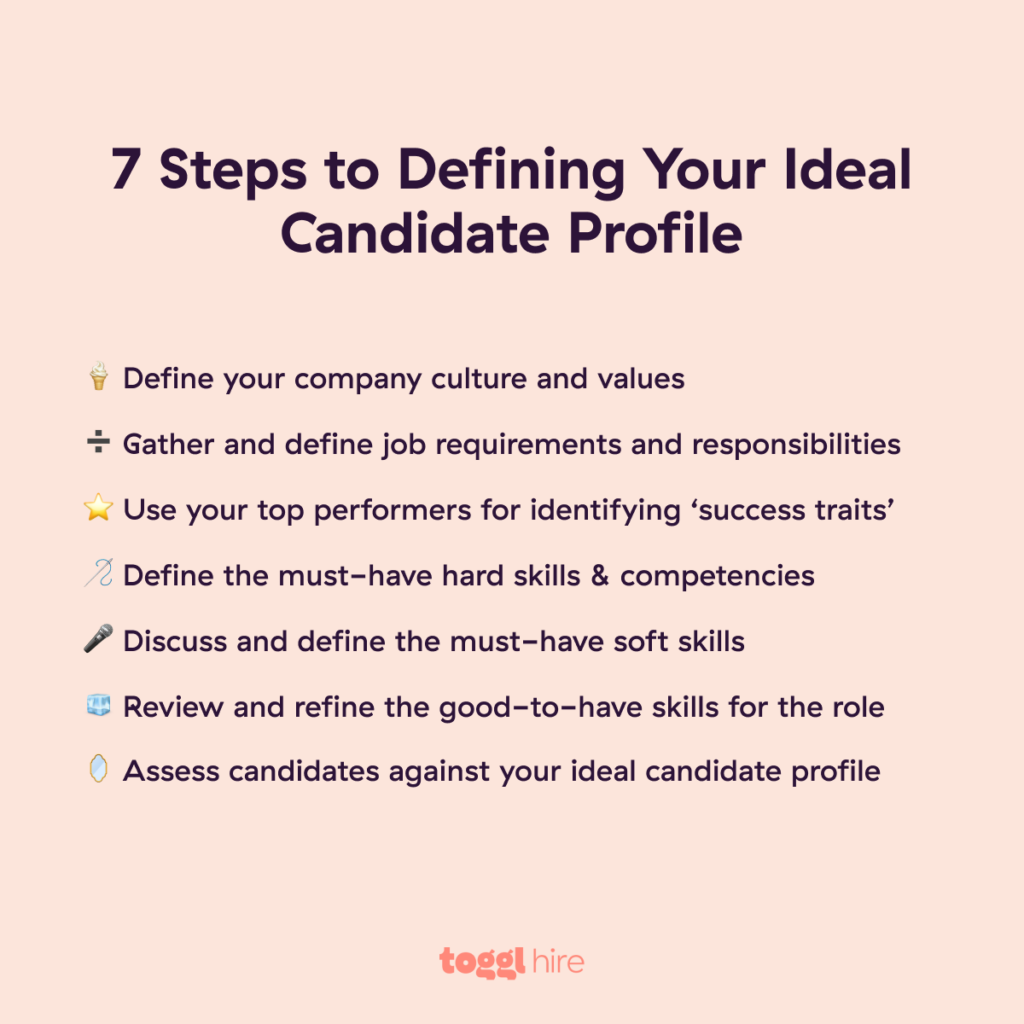
1. Define the content and job duties
Before doing anything, carry out job task analysis and list out everything that your ideal candidate would do in a typical day or week. Include the key tasks they should be able to complete as well as their long-term responsibilities. Once you have this in writing, creating the rest of the profile becomes a walk in the park.
2. List the hard and soft skills
Think of the hard professional skills that the employee needs to have to do their job well. Technical know-how, knowledge of a certain program or tool, experience in a certain industry, and everything they need to complete their everyday tasks.
Soft skills are just as important! Think about what you want in an ideal candidate profile: interpersonal skills, communication skills, leadership skills, time management and everything else. Be realistic and select only key traits your perfect candidate should have.
🔥 See these 8 examples of job requirements to attract great candidates.
3. Be clear on nice to have vs must-have qualities
Take the time to consider which skills are must-haves and which ones are just nice to have for the job. If you list too many qualities as must-haves in your ideal candidate profile (and job description), you risk turning some solid candidates off from applying. Not to mention, you could be setting your standards too high, making it impossible to find the perfect candidate.
4. Consider your company’s identity, culture, and vision
Just like job descriptions, ideal candidate profiles are not something you can just copy from some other business. Incorporate a bit of yourself in your ideal candidate profile – and think about what they need to have to truly fit in if you hire them.
5. Learn from your top performers and existing employees
Take a look around your company, especially your top employees. They probably have something in common — a key trait that ties them together. Maybe they’re great problem solvers, excellent communicators or just top-notch performers when it comes to executing on hard skills. Identify what that common thread is and add it to your ideal candidate profile.
Put your ideal candidate to the test with Toggl Hire
So, you’ve found your purple squirrel, now what? Now, you need to ensure they’re actually the person they claim to be. For that, you’ll need a skills assessment.
Put their skills to the test with Toggl Hire, be it technical or soft skills. Explore our test library and find the right test to assess your next ideal candidate! Then, create a free account to get started.

Juste loves investigating through writing. A copywriter by trade, she spent the last ten years in startups, telling stories and building marketing teams. She works at Toggl Hire and writes about how businesses can recruit really great people.












